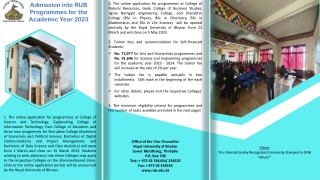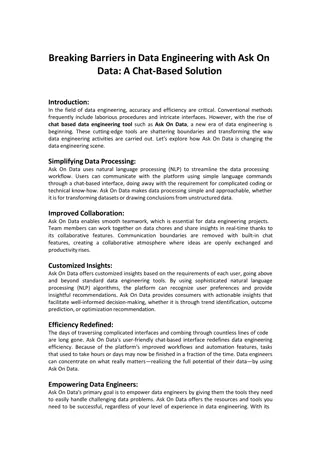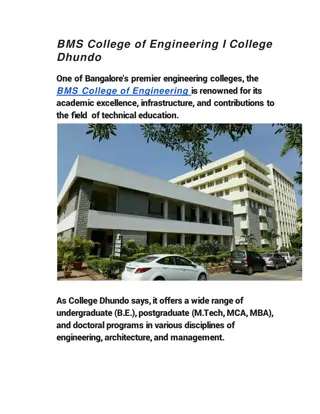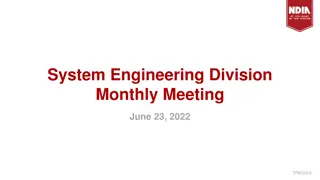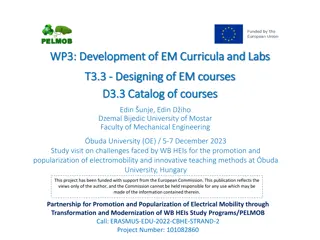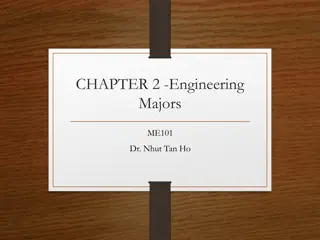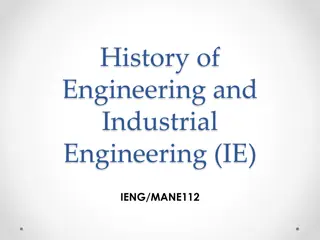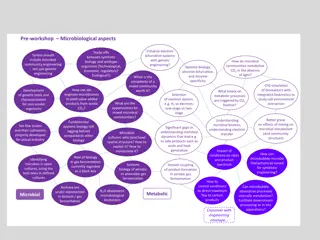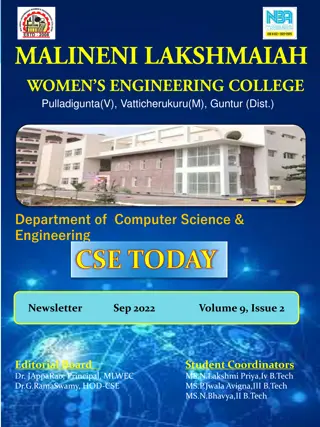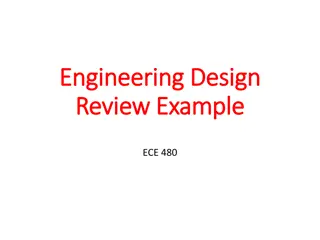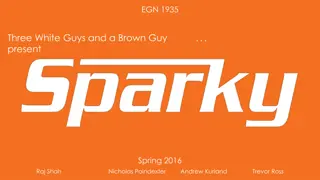Assistant Professor Sharika T.R. - Sree Narayana Gurukulam College of Engineering
Sharika T.R. is an Assistant Professor at Sree Narayana Gurukulam College of Engineering, Ernakulam. Explore her academic profile, examination patterns, course modules, and SQL query examples provided in this content.
Download Presentation

Please find below an Image/Link to download the presentation.
The content on the website is provided AS IS for your information and personal use only. It may not be sold, licensed, or shared on other websites without obtaining consent from the author.If you encounter any issues during the download, it is possible that the publisher has removed the file from their server.
You are allowed to download the files provided on this website for personal or commercial use, subject to the condition that they are used lawfully. All files are the property of their respective owners.
The content on the website is provided AS IS for your information and personal use only. It may not be sold, licensed, or shared on other websites without obtaining consent from the author.
E N D
Presentation Transcript
ABOUT ME I am Sharika T R Assistant Professor, CSE Sree Narayana Gurukulam College of Engineering Ernakulam sharika100@gmail.com www.sharikatr.in
END SEMESTER EXAMINATION PATTERN PART A 10 questions with 2 questions from each module, having 3 marks for each question should answer all questions Part B contains 2 questions from each module of which a student should answer any one. Each question can have maximum 2 sub-divisions and carries 14 marks.
QUESTION TYPE 1
QUESTION TYPE 2
QUESTION TYPE 3
QUESTION TYPE 4 ANSWER.
1. In the following tables ADVISOR and TAUGHTBYare foreign keyd referring to the table PROFESSOR. ROLLNO and COURSEID in ENROLLMENT refer to tables with primary keys of the same name. QUESTION TYPE 1 STUDENT(ROLLNO, NAME, AGE, GENDER, ADDRESS, ADVISOR) COURSE(COURSEID, CNAME, TAUGHTBY, CREDITS) PROFESSOR(PROFID,PNAME, PHONE) ENROLLMENT(ROLLNO, COURSEID, GRADE) Write SQL expressions for the following queries: (i)Names of courses taught by Prof. Raju . (ii)Names of students who have not enrolled for any course taught by Prof. Ganapathy . (iii)For each course, name of the course and number of students enrolled for the course.
QUESTION TYPE 2 2. Suppose that we have an ordered file with 400,000 records stored on a disk with block size 4,096 bytes. File records are of fixed size and are unspanned,with record length 200 bytes. How many blocks are needed for the file? Approximately, how many block accesses are required for a binary search in this file? On an average, how many block accesses are required for a linear search, if the file is nonordered?
Question Type 1 Given R(A,B,C,D,E) with the set of FDs, F = {AB CD, ABC E, C A}. i)Find any two candidate keys of R (3) ii)What is the normal form of R? Justify your answer. (6) ii) AB CD //SK(AB) determines prime(C)or non prime(D) allowed in 3NF ABC E // SK(AB) determines non prime(E) allowed in 3NF C A //Prime(C) determine Prime(C) allowed in 3NF So this is in 3NF
QUESTION TYPE 2 Given a relation R(A,B,C). Find the minimal cover of the set of functional dependencies given; F= {A BC, B C, A B, AB C}
QUESTION TYPE 3 Consider the relation R = {A, B, C, D, E, F, G, H} and the set of functional dependencies F = {A DE, B F, AB C, C GH, G H}. What is the key for R? Decompose R into 2NF and then 3NF relations.
QUESTION TYPE 4 Suppose that we decompose the schema R = (A, B, C, D, E) into R1(A, B, C) R2(A, D, E) Test whether the given decomposition is a lossless-join decomposition, if the following set holds in R: F= {A BC, D E, B D, E A} F of functional dependencies
QUESTION TYPE 1 Determine if the following schedule is conflict serializable. Is the schedule recoverable? Is the schedule cascade-less? Justify your answers. r1(X), r2(Z), r1(Z), r3(X), r3(Y ), w1(X), c1, w3(Y), c3, r2(Y), w2(Z), w2(Y), c2 (Note: ri(X)/wi(X) means transaction Ti issues read/write on item X; ci means transaction Ti commits.)
QUESTION TYPE 2 Illustrate two-phase locking with a schedule containing three transactions. Argue that 2PL ensures serializability. Also argue that 2Pl can lead to deadlock.


